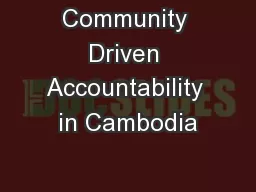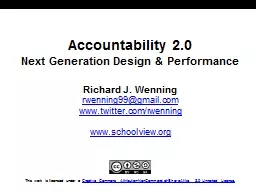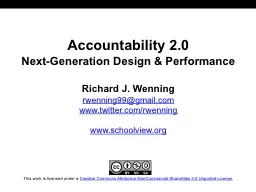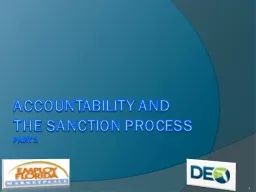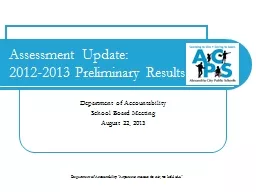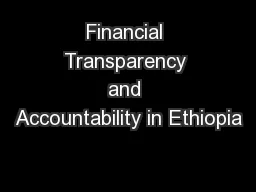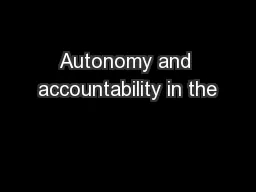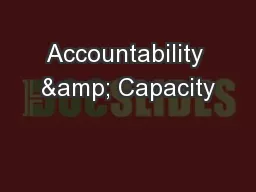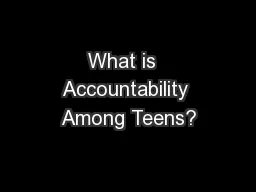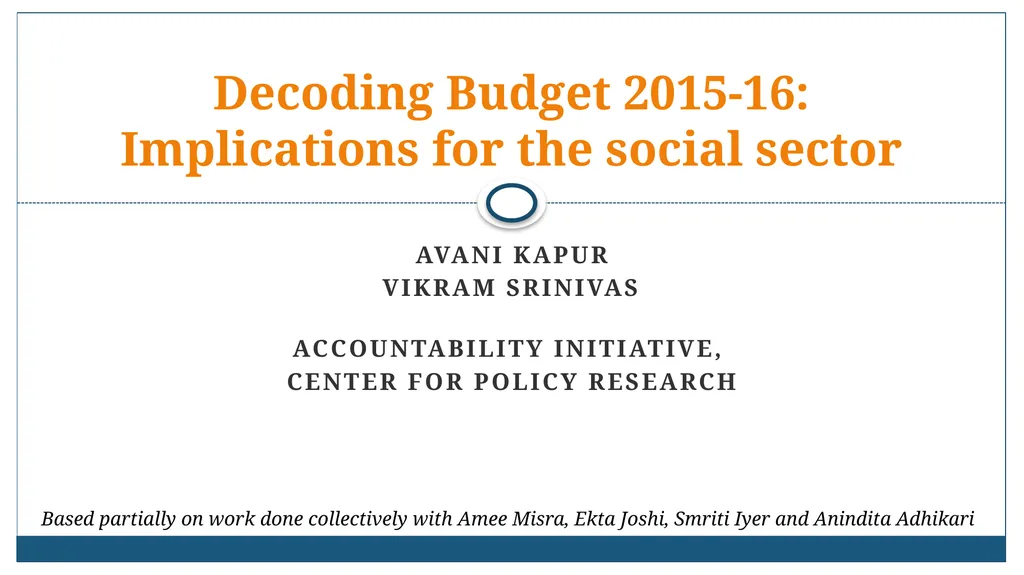
Author : mitsue-stanley | Published Date : 2025-06-27
Description: Avani Kapur Vikram Srinivas Accountability Initiative, Center for Policy Research Decoding Budget 2015-16: Implications for the social sector Based partially on work done collectively with Amee Misra, Ekta Joshi, Smriti Iyer and AninditaDownload Presentation The PPT/PDF document "" is the property of its rightful owner. Permission is granted to download and print the materials on this website for personal, non-commercial use only, and to display it on your personal computer provided you do not modify the materials and that you retain all copyright notices contained in the materials. By downloading content from our website, you accept the terms of this agreement.
Here is the link to download the presentation.
"Avani Kapur Vikram Srinivas Accountability"The content belongs to its owner. You may download and print it for personal use, without modification, and keep all copyright notices. By downloading, you agree to these terms.

